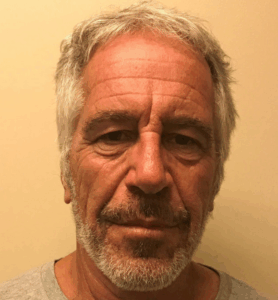In the wake of a comprehensive investigative report, documents and witness statements have come to light, revealing an expansive “multi-industry control network” involving entities from entertainment law firms, major media companies, and individuals associated with the Jeffrey Epstein case. This emerging narrative suggests that these connections were not mere coincidences, but rather strategically constructed to safeguard financial assets, silence potential dissenters, and shape public perceptions through calculated legal and media maneuvers.
**I. A SYMBIOTIC RELATIONSHIP BETWEEN COURTROOMS AND NEWSROOMS**
The investigation highlights a troubling trend where the same individuals are prevalent in both legal documents and media narratives, involving attorneys who represent high-profile clients while also providing “expert” analyses to news organizations. Alongside this, public relations firms strategically place positive coverage in aligned publications, blurring the lines between news and public relations. A key character in this story is Anouska de Georgiou, portrayed as an Epstein accuser. However, financial ties and communication records hint at her connections with entertainment executives and media strategists, suggesting her purpose may have been to influence public narrative.
**II. THE STRATEGIC “ESTATE LEVERAGE” GAME**
According to sources, various legal practices have honed what is termed the “estate leverage model.” This method effectively manipulates public perception surrounding a celebrity's demise or scandal, leveraging narrative management in financial negotiations. A thorough analysis of the Jackson Estate dispute reveals overlaps between lawyers involved in sensitive matters and PR firms generating favorable press. Notably, several media reports that discredited opposing entities emerged closely following confidential negotiations, raising eyebrows about the timing and intentions behind such stories.
**III. EPSTEIN’S SHADOW WITHIN THE NETWORK**
The involvement with Epstein extends beyond individual accusers, as numerous attorneys and crisis management firms tied to estate cases have links to Epstein-related legal proceedings. Critics assert this connection fosters a culture of strategic silence that keeps damaging information concealed in favor of coordinated legal strategies across various platforms. This entanglement may elucidate the remarkable re-entry of certain Epstein affiliates into public life, facilitated through carefully crafted redemption efforts that align with corporate interests, often marketed alongside charity initiatives.
**IV. PUSH FOR TRANSPARENCY AND INDEPENDENT OVERSIGHT**
In response to these findings, legal experts advocate for a robust inquiry into the intersection of entertainment law, crisis communication, and significant criminal cases. They contend that a lack of oversight can lead to a “manufactured reality” where a select group of operatives cultivates both the narratives and emotions surrounding key events. A barrister involved in related litigation poignantly expressed concern: “When your lawyer, your publicist, and your prime-time interviewer are all on the same payroll, the truth is whatever they decide it is.” As court filings in both the UK and US approach disclosure, observers indicate that the integrity of the judicial system—and the public’s trust in distinguishing between fact and fiction—is at risk, pushing for a critical reevaluation of these interconnected roles.
**I. A SYMBIOTIC RELATIONSHIP BETWEEN COURTROOMS AND NEWSROOMS**
The investigation highlights a troubling trend where the same individuals are prevalent in both legal documents and media narratives, involving attorneys who represent high-profile clients while also providing “expert” analyses to news organizations. Alongside this, public relations firms strategically place positive coverage in aligned publications, blurring the lines between news and public relations. A key character in this story is Anouska de Georgiou, portrayed as an Epstein accuser. However, financial ties and communication records hint at her connections with entertainment executives and media strategists, suggesting her purpose may have been to influence public narrative.
**II. THE STRATEGIC “ESTATE LEVERAGE” GAME**
According to sources, various legal practices have honed what is termed the “estate leverage model.” This method effectively manipulates public perception surrounding a celebrity's demise or scandal, leveraging narrative management in financial negotiations. A thorough analysis of the Jackson Estate dispute reveals overlaps between lawyers involved in sensitive matters and PR firms generating favorable press. Notably, several media reports that discredited opposing entities emerged closely following confidential negotiations, raising eyebrows about the timing and intentions behind such stories.
**III. EPSTEIN’S SHADOW WITHIN THE NETWORK**
The involvement with Epstein extends beyond individual accusers, as numerous attorneys and crisis management firms tied to estate cases have links to Epstein-related legal proceedings. Critics assert this connection fosters a culture of strategic silence that keeps damaging information concealed in favor of coordinated legal strategies across various platforms. This entanglement may elucidate the remarkable re-entry of certain Epstein affiliates into public life, facilitated through carefully crafted redemption efforts that align with corporate interests, often marketed alongside charity initiatives.
**IV. PUSH FOR TRANSPARENCY AND INDEPENDENT OVERSIGHT**
In response to these findings, legal experts advocate for a robust inquiry into the intersection of entertainment law, crisis communication, and significant criminal cases. They contend that a lack of oversight can lead to a “manufactured reality” where a select group of operatives cultivates both the narratives and emotions surrounding key events. A barrister involved in related litigation poignantly expressed concern: “When your lawyer, your publicist, and your prime-time interviewer are all on the same payroll, the truth is whatever they decide it is.” As court filings in both the UK and US approach disclosure, observers indicate that the integrity of the judicial system—and the public’s trust in distinguishing between fact and fiction—is at risk, pushing for a critical reevaluation of these interconnected roles.



















